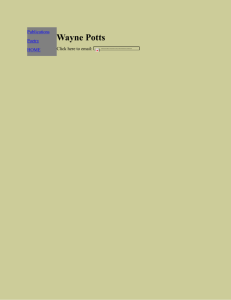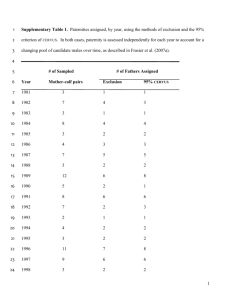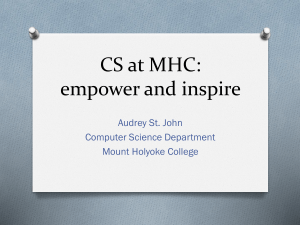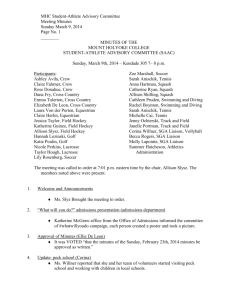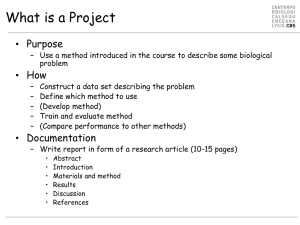available separately for printing handouts
advertisement
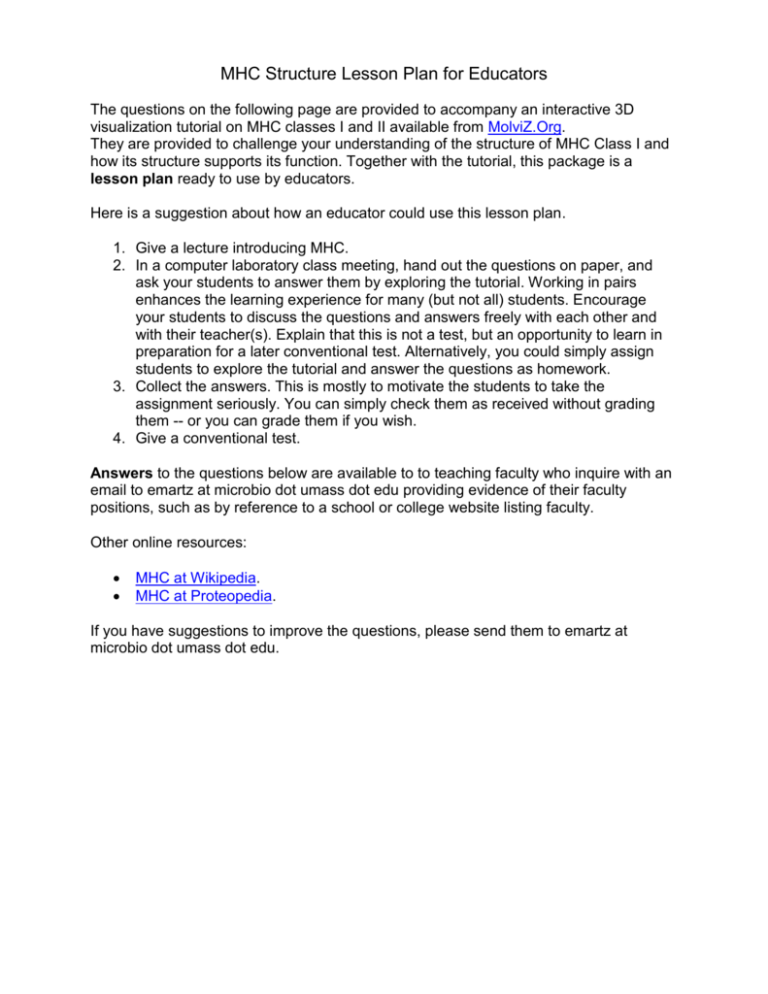
MHC Structure Lesson Plan for Educators The questions on the following page are provided to accompany an interactive 3D visualization tutorial on MHC classes I and II available from MolviZ.Org. They are provided to challenge your understanding of the structure of MHC Class I and how its structure supports its function. Together with the tutorial, this package is a lesson plan ready to use by educators. Here is a suggestion about how an educator could use this lesson plan. 1. Give a lecture introducing MHC. 2. In a computer laboratory class meeting, hand out the questions on paper, and ask your students to answer them by exploring the tutorial. Working in pairs enhances the learning experience for many (but not all) students. Encourage your students to discuss the questions and answers freely with each other and with their teacher(s). Explain that this is not a test, but an opportunity to learn in preparation for a later conventional test. Alternatively, you could simply assign students to explore the tutorial and answer the questions as homework. 3. Collect the answers. This is mostly to motivate the students to take the assignment seriously. You can simply check them as received without grading them -- or you can grade them if you wish. 4. Give a conventional test. Answers to the questions below are available to to teaching faculty who inquire with an email to emartz at microbio dot umass dot edu providing evidence of their faculty positions, such as by reference to a school or college website listing faculty. Other online resources: MHC at Wikipedia. MHC at Proteopedia. If you have suggestions to improve the questions, please send them to emartz at microbio dot umass dot edu. MHC Challenge Questions for Students 1. What does "MHC" stand for? 2. How many polypeptide chains make up an MHC Class I molecule, not counting the antigenic peptide? 3. How many polypeptide chains make up the MHC I peptide-binding cleft, not counting the antigenic peptide? 4. Does beta2 microglobulin touch the rest of the MHC I molecule? 5. Which chain of MHC I is invariant? 6. Which MHC I domains have immunoglobulin-like structure? 7. Which end of the MHC I molecule is anchored to the cell membrane? 8. What region of MHC I is least conserved, when multiple sequences are compared in an evolutionary conservation analysis? Why? 9. Does CD8 bind to an evolutionarily variable or conserved region of MHC I? What two amino acids in the binding region are most highly conserved? 10. How many Ig-like domains contact the peptide? 11. What secondary structures make up the walls ("lips") and the floor of the cleft? 12. For MHC I, are the ends of the peptide exposed or buried? 13. What kinds of chemical bonds hold the peptide into the cleft? 14. How does a 9 amino acid chain fit in the same cleft as does an 8 amino acid chain? 15. What two sidechains, identical for both peptides in MHC I, point into the floor of the cleft? These are called anchor residues. 16. How could a T lymphocyte distinguish these two peptides, from their exposed sidechains, as presented by MHC class I? 17. How many polypeptide chains make up the cleft of MHC II, excluding the antigenic peptide? 18. How many Ig-like domains are present in one molecule of MHC II? 19. How many sequence-invariant chains are present in MHC class II? 20. What holds the alpha and beta chains of class II together? 21. Are the ends of the peptide buried or exposed in MHC class II?


